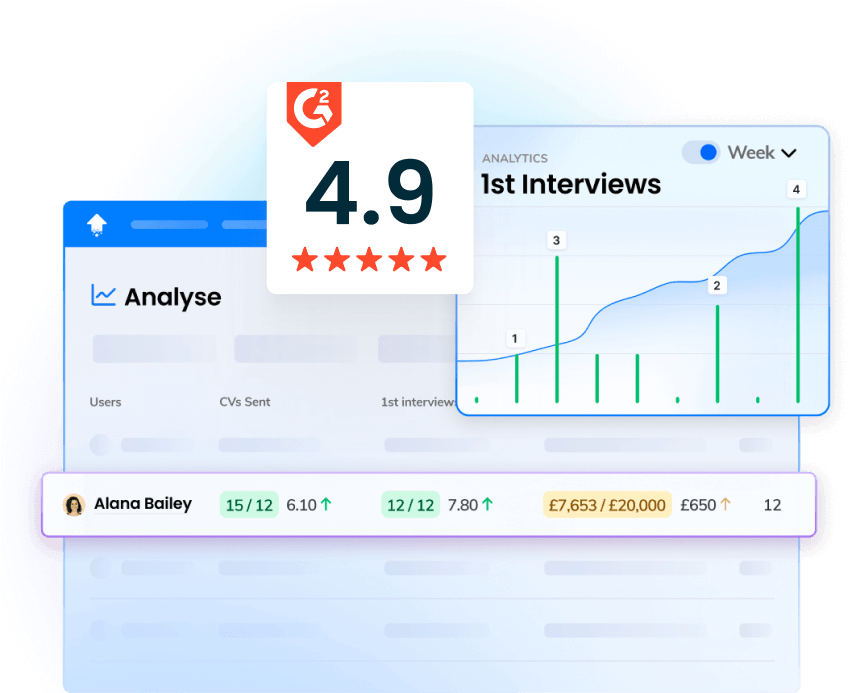Every company gets told to make ‘data-driven decisions’ but most are so overwhelmed by it that they don’t know where to begin! Software as a Service (SaaS) companies are hot on data-driven decisions, so this blog explores their approach to see how you can make better decisions at your agency.
Wherever you go to learn about business, it’s a matter of time before you read/watch/hear something about a SaaS company achieving great things. There are many of them: a recent study from Gartner said that the SaaS space is approximately worth over $195 billion!
It’s an attractive business model as SaaS companies are capable of growing fast due to their products living in the cloud. Plus, they have a great business development mindset. And data is at the heart of it.
Why are data and metrics key for SaaS Companies?
A major reason why SaaS companies often grow so fast is that they quickly identify the metrics that they need to focus on improving. There’s an endless amount of data to look at, but SaaS companies know which metrics they need to boost to grow their business.
Reviewing data and metrics regularly helps them:
- Make data-driven decisions
- Optimise products and services
- Personalise their user experience
- Reduce churn (the point where people cancel subscriptions, unsubscribe from emails, etc.)
- Create more effective marketing campaigns
- Keep a finger on the pulse of customers to keep them happy.
What Kinds of Data Do SaaS Companies Collect?
Every stage of the customer lifecycle provides key insights that SaaS companies can use to improve their products and services. So, they collect data for all of it:
Content analytics – to learn about the types of content that visitors are reading/downloading – such as blogs, emails, lead magnets, etc. to help them learn which topics and content types their audience responds well to.
Pre-signup & lead generation – website interactions (what pages have visitors viewed, what have they downloaded, etc.), source of leads, and demographic information, etc. to help them learn more about their customers and how they use their products and services.
Churn analysis – to learn where are people cancelling/unsubscribing in their process, to help them make changes and improve customer engagement.
And much, much more…
What Data Can Recruiters Use to Make Data-Driven Decisions?
Recruitment companies typically don’t have ‘products’ like SaaS companies but there’s plenty of data at hand that can help them become more effective. Collecting data around placements, placements’ success, and how long clients stay with them could be seen as their ‘product’ analytics.
SaaS Metrics That Are Useful for Recruiters To Track
1. Conversion Rates Between Stages of Your Prospecting Cycle
Every sales manager has had their heart broken as their sales pipeline led them to believe they were in for a hugely profitable month… only to see many prospects drop out! SaaS companies are aware of this problem, so they create a ‘weighted pipeline’ to combat it. So for every stage of their pipeline, they assign a probability percentage to it.
For recruiters, a weighted pipeline makes sales pipeline forecasts more reliable. Once you see your prospects sitting in your pipeline, knowing the probability of them reaching the next stage, you can tighten up your processes to see where improvements need to be made to reduce the number of prospects dropping out.
2. Conversion Rates for Different Channels
SaaS companies are always optimising. For instance, if a company is selling a productivity tool, they may use a mix of inbound and outbound marketing strategies to see which methods are the most effective in achieving a conversion rate.
Recruiters can do the same thing. Looking back at all your placements’ journeys, you can learn how each of them entered your pipeline. It should reveal which approach is the most effective in leading to a placement. If referrals are proven to be the most effective for you, explore your referral programs to secure more referrals, etc.
3. Focus on Optimising Your Efficiency Rates
Unless you know which metrics make you effective, data can lead you to think you’re doing better than you are. For instance, increased social media engagement, more interviews booked, and more email subscribers all look great – but are they actually helping you make more sales?
Track and aim to optimise the metrics that make you more effective:
- Placements
- Calls-to-placement
- Time-to-hire
- Cost-to-hire
- Job offer acceptance rates
Knowing your success metrics makes data less daunting and stops you from barking up the wrong tree. Making time to regularly asses them will give you the clarity to make data-driven decisions that’ll help you become a more effective agency.


